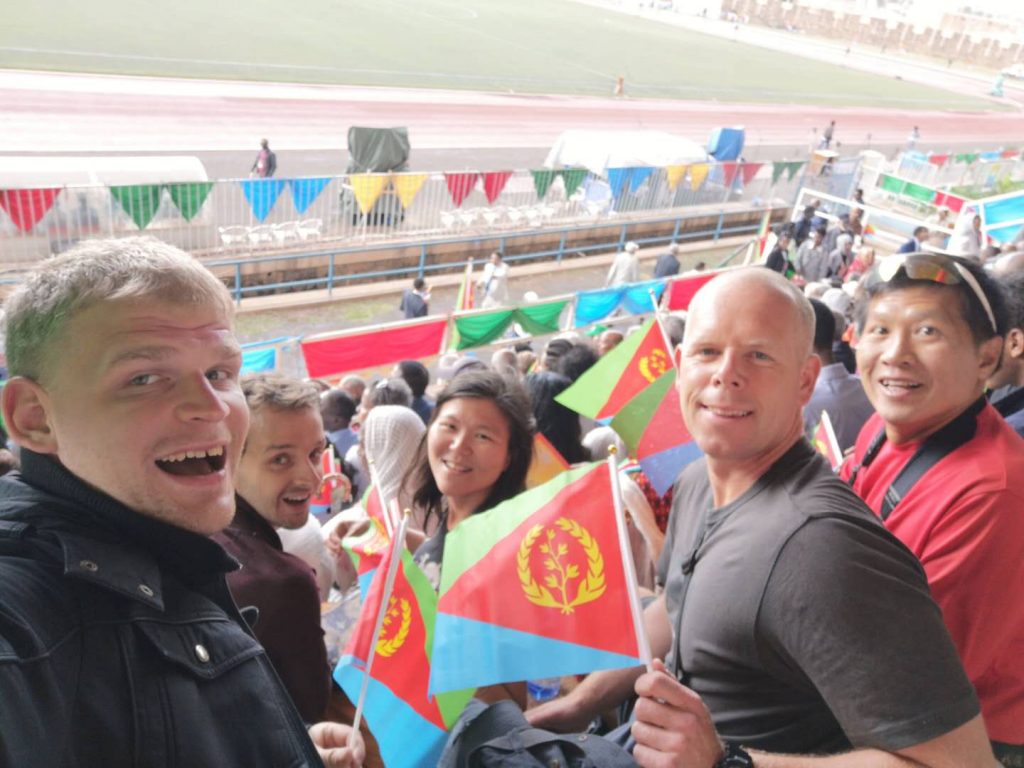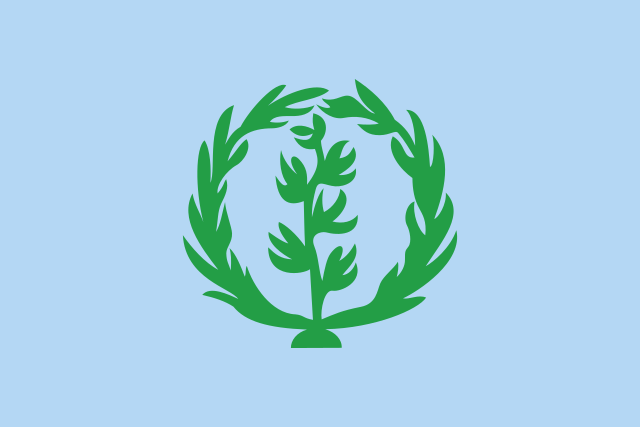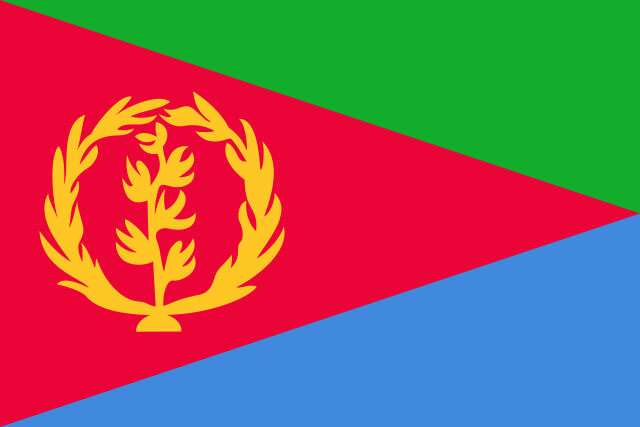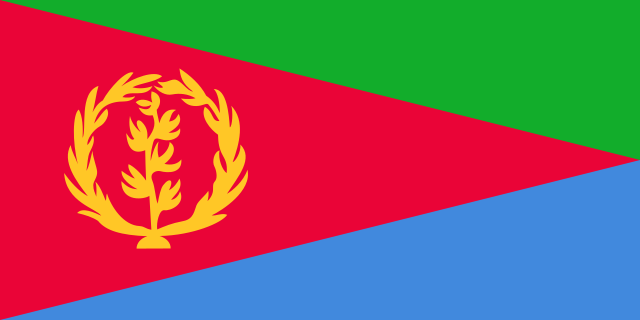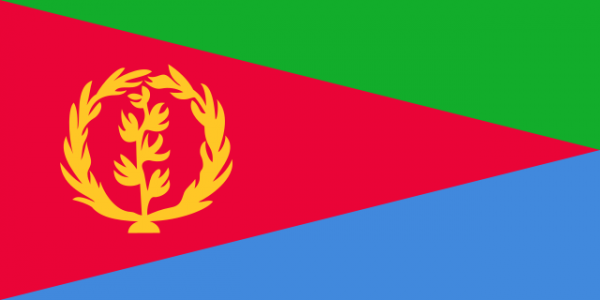
The national flag of Eritrea is a colourful flag of East Africa. It has been the symbol of the country since 1995.
Design of the flag of Eritrea
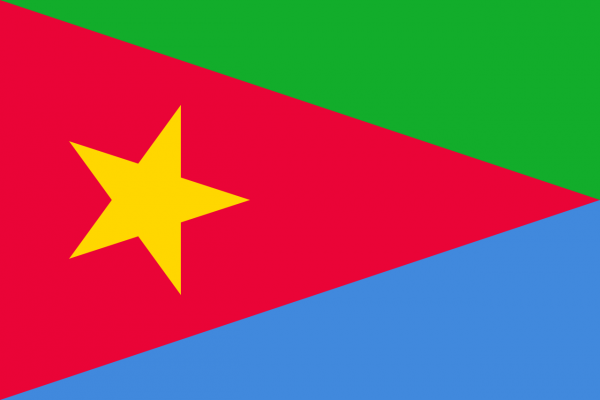
The Eritrean flag is a combination of the party flag of the Eritrean People’s Liberation Front, which has been leading the country since its independence in 1991, and the previous flag. The Eritrean People’s Liberation Front is the country’s only legal political party, which explains that its colours feature on the national flag. The meaning of the colours is the following: green symbolises agriculture and livestock, blue symbolises the wealth of the sea for this coastal country and the red triangle symbolises the blood spent towards the independence of the country. The red triangle shape is also there to represent the shape of the country.
Instead of the star of the party, the national flag sports a wreath along with an olive branch. The wreath has thirty leaves, standing for the 30 year struggle for independence. The olive branch has six leaves, which represent the six administrative regions of Eritrea.
History of the flag of Eritrea

1952-1962 
Flag from 1993-1995 
Current flag
The flag has a history intertwined into the violent conflict that opposed Ethiopia and Eritrea. Both Eritrea and Ethiopia were invaded by Italy, with Eritrea being entirely colonized by the Italians. When the two countries were liberated from Italy by Great Britain, Ethiopia reverted to its monarchy predating Italian rule, while Eritrea became a British protectorate. As a result, Eritrea successively had the Italian and then the British flag as its national flag.
Unhappy with the British rule, the Muslim part of Eritrea demanded independence. It was suggested that Eritrea be split into two countries. Its Muslim majority would be incorporated into Sudan and its Christian part would be given to Ethiopia. Ethiopia, under the rule of Emperor Haile Selassie, was claiming that Eritrea was its lost province. After much deliberation, it was decided that Eritrea would be an autonomous region in federation with Ethiopia. As the United Nations had helped Eritrea get its independence from the British, a light blue flag with an Olive branch became the flag; a tribute to the United Nations and of peace.
However, Haile Selassie would have none of it and when Eritreans tried to ask for full independence rather than autonomy, he banned the new flag of Eritrea as well as other symbols and proceeded to annex the country in a conflict that would last thirty years (1961-1991), until the independence of Eritrea.
The Eritrean People’s Liberation Front fought and succeeded against the annexation after the fall of the Mengitsu regime in Ethiopia. At this time, the Eritrean People’s Liberation Front took control of Eritrea and issued a referendum for independence. The referendum was almost unanimously in favor of independence from Ethiopia, which was granted in 1993. That is when, in 1993, the new flag of Eritrea was adopted. This flag is very similar to the current flag of Eritrea with the only difference that, in 1995, its ratio was modified.
If you want to see the flag of Eritrea in action, be sure to join our National Day Tour of Eritrea as, at that time, the national flag is hoisted and worn by everyone in the country!
